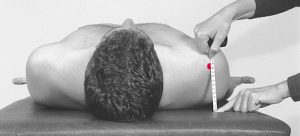Great to have master physical therapist Ziad Dahdul DPT, OCS back to share his thoughts on preventing kids shoulder pain.
Ziad writes on kids shoulder pain as an orthopedic physical therapist and owner of Ignite Phyzio & Sports Performance, serving Orange and Los Angeles Counties. He graduated from the University of Southern California with a doctorate in physical therapy. Ziad works with high level collegiate and high school athletes in addition to helping clients rehabilitate conditions across the lifespan. He became an orthopedic clinical specialist (OCS) in 2014 and utilizes an evidence-based approach to treating his clients.
Instagram handle: ignitephyzio Twitter handle: @z_dahdul Website: www.ignitephyzio.com
This article follows a previous blog post. Click HERE (https://activekidmd.com/kidsshoulderpain/) to read part one
Kids shoulder pain is extremely common in the athletic population. Many sports require overhead movements such as baseball, swimming, and volleyball, to name a few. With organized sports played throughout the year now with less time off for our young athletes (which is a whole different discussion), we’ve seen a rise in shoulder overuse injuries to structures like the rotator cuff, labrum, and AC joint.
While we can’t completely reduce the risk of kids shoulder pain from happening, there are things we can do with prevention in mind in order to make our athletes as strong, mobile, and resilient as possible.
With all that said, here are a few ways to identify possible limitations and 6 ways you can prevent a future shoulder injury before it happens!
Preventing Kids Shoulder Pain: Pectoralis Minor length
Tightness on the front of the chest can limit the space underneath the collarbone. This can lead to increased stress on the rotator cuff and biceps tendons. Common causes include prolonged poor sitting posture or weakness of the shoulder blade musculature.
To find out if you have tightness in your pecs, lie down on your back with your arms by your sides (see picture below). Have someone measure the distance from the surface you’re lying down on to the tip of the collar bone. If the distance is asymmetric by more than one finger width and/or both are more than 3-4 finger widths off the table, then you may be dealing with tightness in your pecs.
(Courtesy: www.musculoskeletalkey.com)
If you found that you have tightness in your pecs, don’t worry. Here are a few simple exercises you can do to improve upon this.
Doorway Pec Stretch
- Stand at a wall/door frame, placing your forearm and hand on the wall with your upper arm parallel to the ground. Gently lean forward until you feel a stretch across the front of your chest. Hold this position for 30 seconds, then repeat on the opposite side. Repeat 2 times each side, 1-2x per day.
- Tip: make sure you do not arch your lower back and that you don’t feel any pain in the shoulder or neck.
Eccentric Pec Strength
- Lying down on your back, hold onto light weights (movement must be pain-free with good control). Slowly lower your arms to the ground. Once your arms are just below parallel to the ground, bring them back up to the starting position. Perform 2 sets of 12 repetitions, rest 30-45 seconds in between each set.
- Tips: Your shoulders should not move upwards towards your head. Your back should be flat against the surface you’re lying on at all times.
Preventing Kids Shoulder Pain: Internal Rotation Range of Motion
This is one of the most common limitations we find in throwers and overhead athletes. Can be due to a number of factors, one of which is tightness on the posterior (back) shoulder. Limitations in shoulder mobility can place extra stress on the inside of the elbow and/or front of the shoulder.
To find out if you have an internal rotation limitation, try this simple and quick assessment:
Compare both sides, looking for a noticeable difference of 10 degrees or more. Full range of motion is when your forearm is parallel to the ground without the front of your shoulder popping up off the ground.
If you found that you have a restriction with this important shoulder range of motion, give these two techniques a try:
Self-STM with lacrosse ball
- Place the lacrosse ball (or tennis ball/baseball/softball) against the wall. Line it up with the back of the shoulder blade. With your arm at your side, roll back and forth in small strokes, focusing on the tender spots. Hold each spot for 5-8 seconds before you move on to the next. Do this for a total of 45-60 seconds on both sides. Then do 7-10 reps reaching across your body, 1-2x/day.
Modified Sleeper Stretch
- Lying down on the side you’re intending to stretch, roll all the way onto your shoulder, then roll off the shoulder until you can feel the outside edge of the shoulder blade against the ground (approximately 45 degrees). Then, take your opposite hand and slowly rotate your shoulder. Once you hit your first barrier, push into the opposite hand lightly, holding for 5 seconds. After 5 seconds, relax the pushing arm and then slowly push the arm further into internal rotation. Repeat this process 5 times. Remember, this should be PAIN-FREE.
- Tip: Your shoulder blade should not shrug up towards your ear. If this is happening, you should slide your elbow away from your head for a better starting position.
Houston Astro Stretching Program
Preventing Kids Shoulder Pain: Scapular Retraction Strength
Often times, we neglect strengthening the mid back and shoulder blades. The importance of these muscles is unmistakable, as they allow for proper timing of the entire shoulder complex and allow for appropriate transmission of forces from the legs and trunk to the arm. Without these two key things, stress can be placed on the shoulder and inner elbow, possibly leading to injuries down the line.
Finding out if you have restrictions here is a combination of many different movements. One basis tenet is the ability to activate your shoulder blades without compensating with your shoulder joint. Try this movement to see if you can isolate your shoulder blade musculature
Lying on your stomach, squeeze your shoulder blades and raise them up towards the ceiling without letting them move towards your ears. You should be able to do this with both arms resting on the ground as well as with raising the arms up with it. Either way, it should not change how much your shoulder blades move. Hold for 5 seconds, repeat 15 times.
Horizontal Adduction
https://www.instagram.com/p/BYbopX_AmFg/
- Horizontal Adduction: Lying on your side, with your arm straight up towards the ceiling, slowly lower your arm in a controlled manner until you’re below parallel to the ground, then return to the starting position. Add in weight once you can easily perform 15 repetitions without stopping. Perform 2 sets with each arm.
I, T, Y Exercises
- Repeat each movement for 3 sets of 10-15 times depending on your current strength levels, doing each one individually.
This list is by no means inclusive and cannot substitute for a thorough examination by a licensed orthopedic or sports physical therapist or sports medicine specialist. However, they can serve as a way to determine if you have concerns that need to be addressed to help you become the healthiest and most effective athlete you can be!




